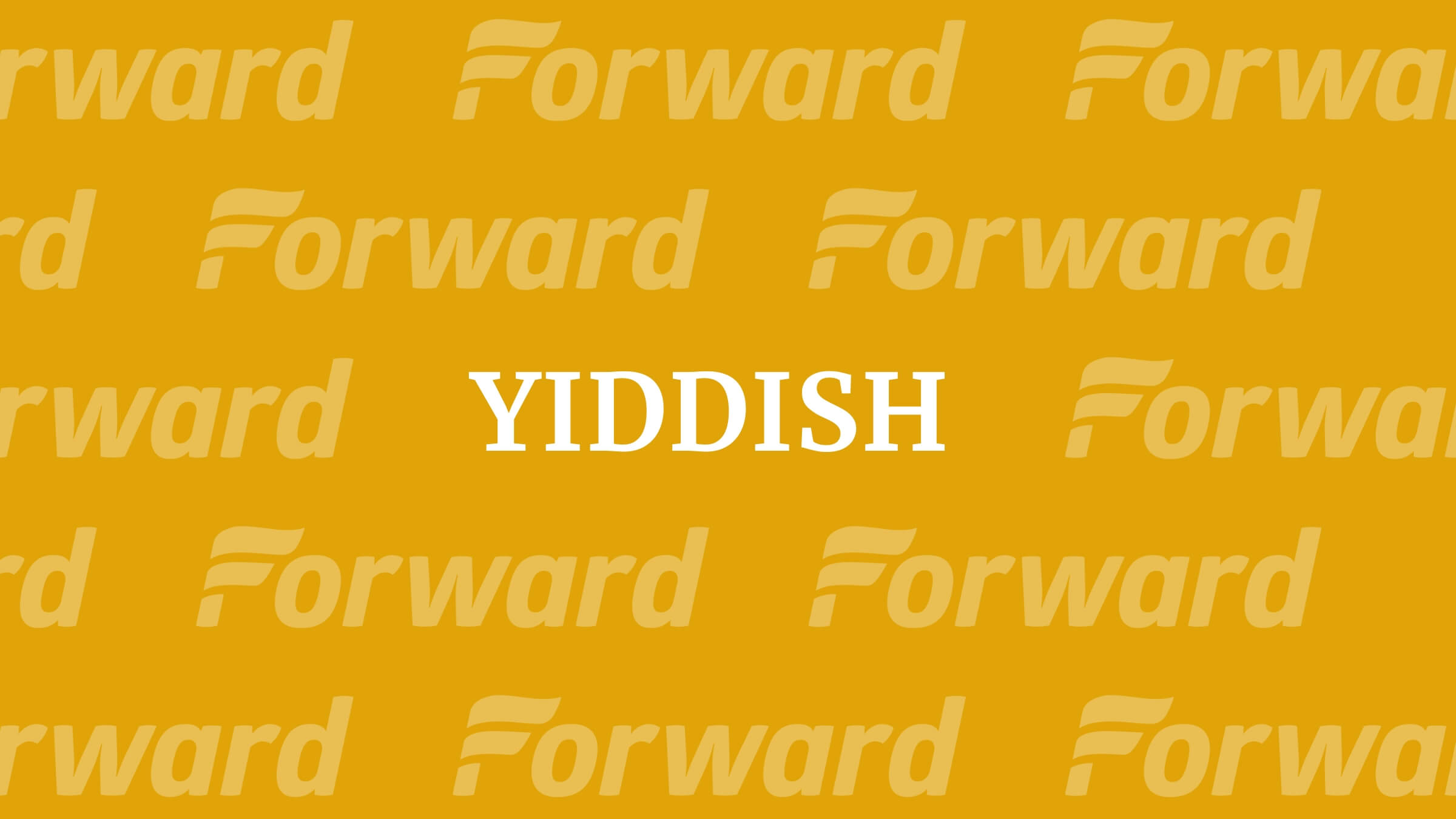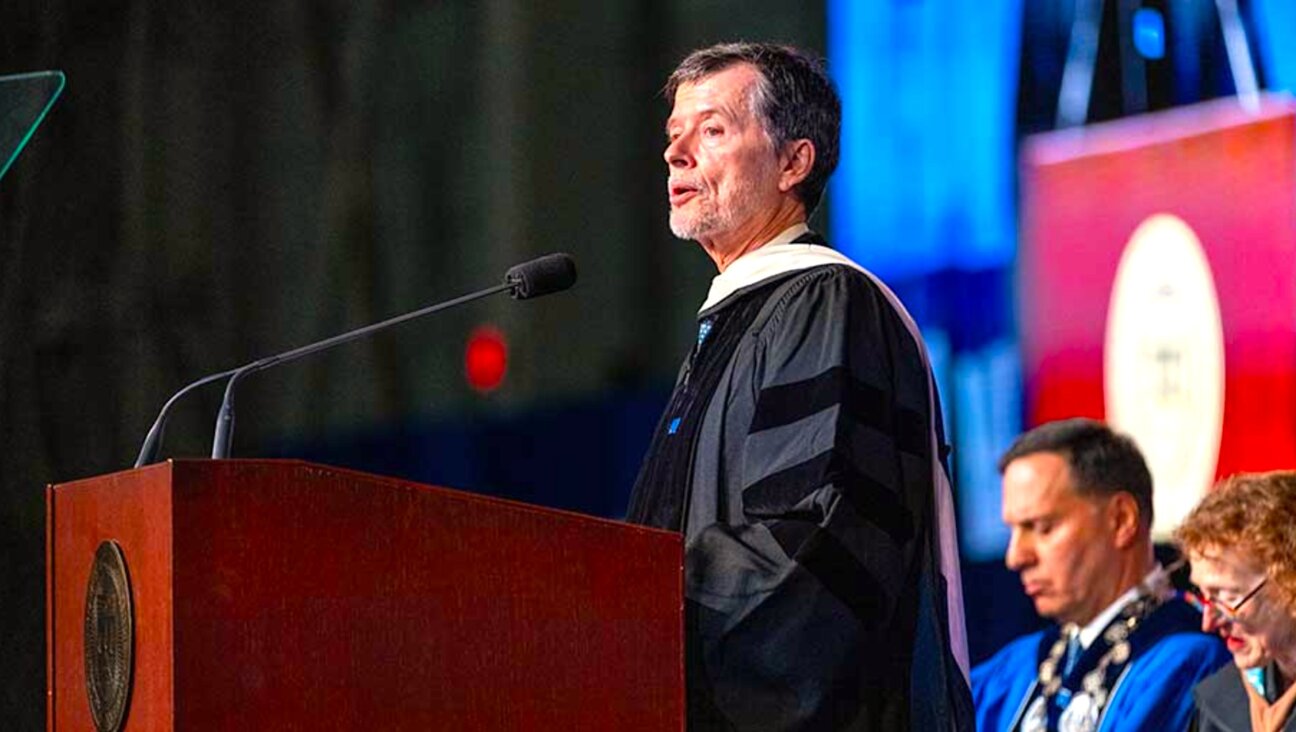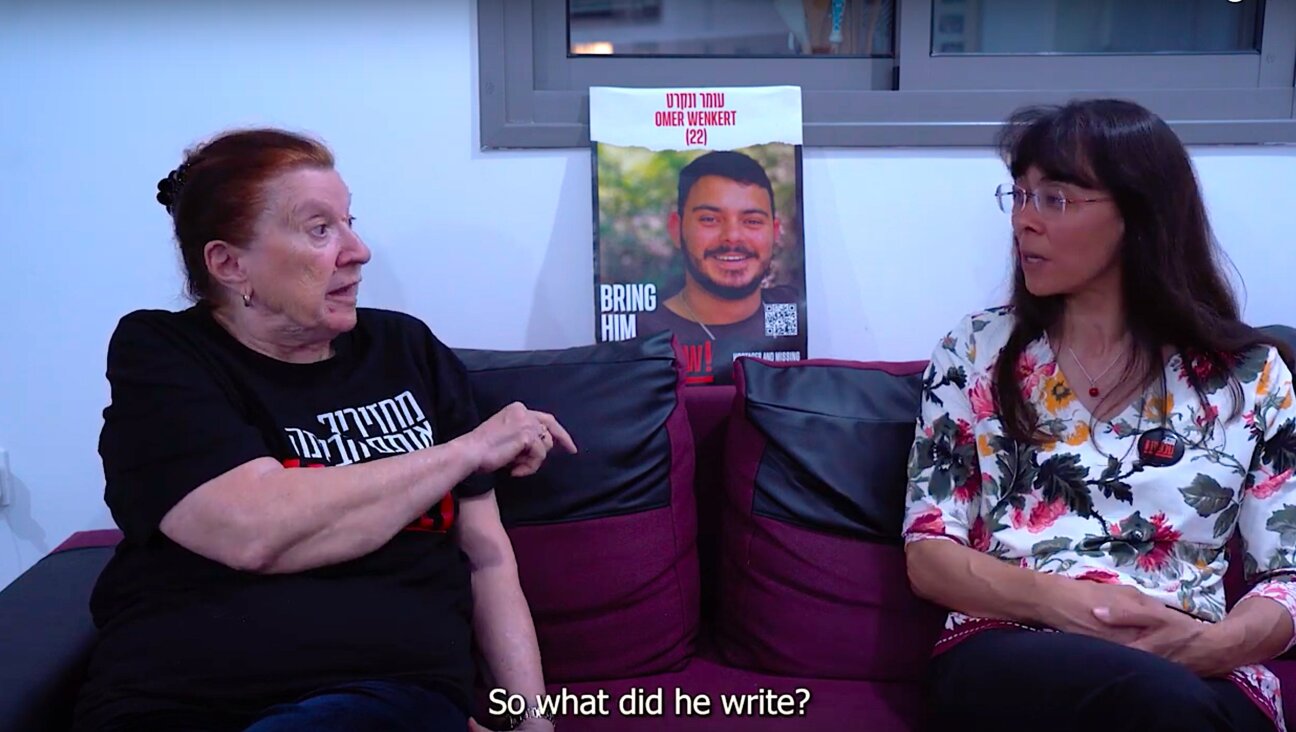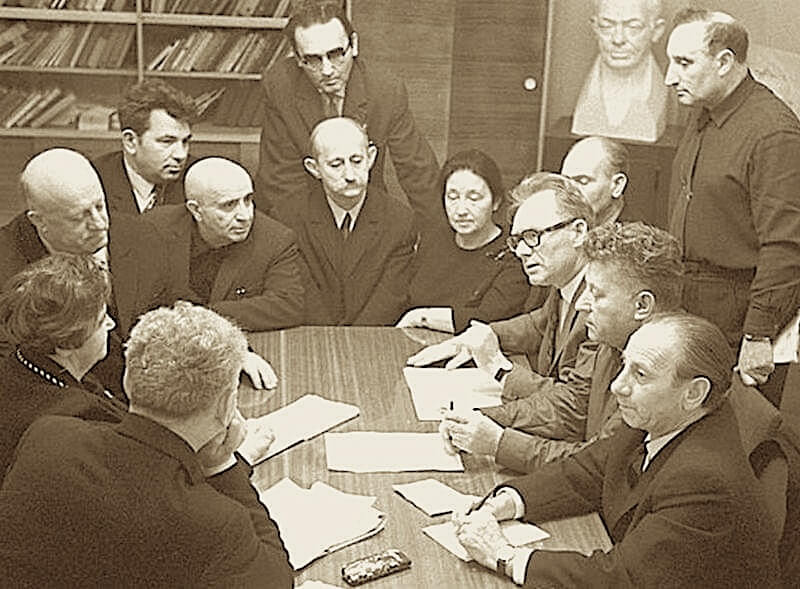An Iranian Jewish Convert Flees To The United States

Graphic by Angelie Zaslavsky
This article originally appeared in the Yiddish Forverts.
Cracow was an unlikely tourist stop for William Mehrvarz. Most Iranian millennials want to “See Iran First,” and their vacation itineraries often include the Lotfollah Mosque in Isfahan or the Valley of Stars on the island of Qeshm. Mehrvarz opted for Cracow in August 2016 to investigate his attachment to Jews and Judaism. An unusual enough quest for any twenty-four-year-old Iranian Moslem, but practically unheard of for one who has kept kosher covertly from the time he was fifteen.
Little did he know that Auschwitz, forty-two miles west of Cracow, would serve as a virtual catapult out of Iran.

William Mehrvarz
Mehrvarz tucked his Cracow visit into a mission organized by the Association internationale des étudiants en sciences économiques et commerciales, or AIESEC, a non-governmental organization whose “youth empowerment for peace and fulfillment of humankind’s potential” recalls a mid-twentieth-century era of cominterns and cross-cultural exchanges. An AIESEC volunteer, Mehrvarz had just completed a leadership training course at the group’s “international congress” in Ossa, Poland, and he was free now to pursue his interest in the German annihilation of European Jewry. In Iran, Mahmoud Ahmadinejad’s denial of the Holocaust had spurred Mehrvarz’s rejection of Islam, and in Cracow, and nearby Auschwitz, Mehrvarz intended to find evidence of the genocide that the former Iranian president said never happened.
“My curiosity about Jews started in childhood when an Armenian Christian friend in Teheran told me about a book called the bible,” Mehrvarz says over a late lunch at a Hummus Place on New York’s Upper West Side. “It was forbidden for Moslems to read the Christian and Jewish bibles, but it was permitted to Armenians. Discovering that the Torah preceded the Koran by nearly two thousand years piqued my interest in the origins of the world’s major religions. Once I encountered the Jews, I couldn’t get them out of my head.”
Mehrvarz was married to a young Moslem woman in Teheran when we met as tourists at 10 Brzozowe Street in Cracow, the former site of a Jewish high school. Farideh* Mehrvarz was also an AIESEC volunteer and a congress attendee touring elsewhere in Poland. While she did not share her husband’s fascination with Judaism, she accepted it as part of his personal — and secret — devotion. She was among the few people in Iran who knew that Mehrvarz no longer identified with “Reza,” his given name, and was now calling himself “William,” in honor of William Shakespeare.
“She came from a conservative family, and even though she covered her hair and wouldn’t shake a man’s hand, she had a strong intellectual side and a love of secular culture,” Mehrvarz said. “We both believed that our marriage could be an integration of integrity and a living diversity. I guess we didn’t really think things through.”
#
Fifteen months after his emigration to New York, Mehrvarz is preparing for a bit part in a Purim spiel at a downtown egalitarian synagogue. His Purim celebration will be the second in the United States, but his fourth overall. In 2014 and 2015, he attended a reading of Megilat Esther at the Tomb of Esther and Mordechai, a Jewish pilgrimage site in Iran’s Hamadan Province.

Tomb of Esther and Mordechai Image by Wikimedia Commons
Participating in the megilah reading at the Tomb was a challenge. Iranian law prohibits Jews from publicizing any Jewish holiday, and without a Jewish calendar, it would be virtually impossible to know Purim’s exact date. Yet the Iranian government knows when to close the Tomb to non-Jews, ensuring that Jews observe the holiday as an insular community.
Mehrvarz was able to blend in with the Jewish worshippers by putting on a kippah and introducing himself with a typical Iranian-Jewish surname. He struggled to follow along in the megilah with his rudimentary knowledge of Hebrew.
“The Purim story has taught me that I have to be prepared to make sacrifices,” Mehrvarz says. “What would I have to abandon in Iran? My family, my friends, my education? Or my Judaism? I was willing to sacrifice my possessions and relationships just to protect my Jewish identity.”
Ironically, various family members kept Mehrvarz from descending into despair. He confided in several cousins who strove to understand his attachment to a religion and a language that struck them as arcane but fascinating. “For a short while, Farideh too gave me the space to light Shabbat candles, even though she could not understand why I was willing to take the risk of exposure and public shame,” he says. “For this I still thank her.”
#
Back in Iran after the AIESEC conference, the Mehrvarzes’ idealism was tested by mealtimes and extended family relationships. As a teenager in his parents’ home, Mehrvarz had become a vegetarian to avoid eating unkosher meat. Farideh acquiesced to her husband’s dietary restrictions, and to his stealthy acquisition of a kippah, Hanukkah menorah and Shabbat candles. Visits from immediate family members were problematic. How could the Mehrvarzes explain the presence of Hebrew books or a magen david in their home?

A more insurmountable problem arose when the Mehrvarzes wanted to have children. They planned on emigrating from Iran to some other country where Farideh could be secular and William Jewish. Their children would be raised Jewish. But what kind of Jewish life could the children have if Judaism viewed them as Moslem and Islam viewed them as the offspring of a traitorous apostate?
Farideh’s miscarriage threw the marriage into a new crisis.
“It really shook our relationship, which was already shaken,” Mehrvarz says.
Farideh blamed William’s five cats for the miscarriage. He blamed her drinking. Thanks to the various AIESEC conferences around the world, and side-trip add-ons, Farideh had had many opportunities to acquire hard liquor. When the Poland conference ended, Farideh and William vacationed in Venice. As the daughter of a diplomat and the holder of a diplomatic passport, Farideh transported banned alcohol from Italy to Iran with impunity.
“Of course, if my father-in-law uncovered my secret, my marriage would be over,” Mehrvarz said.
Possibly, so would his life.
#
Mehrvarz arrived at his first American Purim in 2017 wearing a suit. He had gotten no advance notice to come in costume, and he assumed all Jewish men dressed formally for megilah, as they had in Iran.
“It was like a Halloween party, Jewish-style,” he says. “Not only were people in costume and make-up, but men and women participated together equally. This time I understood the text better than I had at the Tomb. Best of all, I was welcomed as an insider. Completely different from the Purim I had experienced just one year earlier in Iran.”
Another difference: American non-Jews are largely indifferent to a commemoration of violent Jewish self-defense in an ancient vanished empire.
“Non-Jews in Iran did not know when Purim took place, but popular culture often informed them about a ‘Jewish plot’ in some long-ago Persia,” Mehrvarz says. “If they could connect an actual date with the holiday, I truly believe they would have mounted a protest, as they did when they protested a plaque at the Tomb identifying the place as a holy shrine.”
Militant Iranians seized the Tomb in 2010 and removed a plaque describing the site as the “holy tomb of Esther and Mordechai.” The government installed a new plaque that made no mention of the site’s connection to Jewish tradition.
#
The Mehrvarzes came home from the AIESEC conference in time for Farideh’s sister’s wedding. Sadly, their own marriage was in tatters. Farideh wanted to split up before the wedding. William asked her to feign marital harmony until the wedding was over.
They got into an argument at Farideh’s parents’ house so heated that Farideh’s mother intervened.
“Farideh blurted out, ‘This guy is not even Muslim!’”
Mehrvarz froze. “I could understand that she didn’t want to live with me anymore, but my Jewishness had been our loving secret,” he said. “I was afraid of Farideh’s father. He could put my life in jeopardy.”
So could Farideh’s mother. “Inshallah, we will put you behind bars!” she threatened Mehrvarz. “We will hang you!”
Farideh’s sister was stunned. “You are a dirty, filthy Jew,” she cried.
Farideh’s mother and sister confiscated Mehrvarz’s cell phone and then locked him in Farideh’s childhood bedroom. Mehrvarz says all he could think of was a news story he read about another young Iranian accused of apostasy. He had been sentenced to hanging.
“Oh my God,” Mehrvarz thought. “What’s going to happen to my education, my house, my car, my life? My cats!”
Farideh’s mother called Mehrvarz’s parents. By the time they arrived, it was five in the morning.
“My wife’s sister opened my door,” Mehrvarz recalls. “I grabbed my cell phone out of her hand and pushed her out of the way. I just ran.”
As Mehrvarz sped off in his car, he thought about his visit to Auschwitz only several weeks earlier. The Jews murdered there had been told to pack one suitcase.
“I owned one suitcase,” Mehrvarz says. “I began packing my clothes when suddenly I asked myself, ‘What about your Jewishness?’ I tossed out the clothes and packed my chumash, siddurim and kipot.”
Mehrvarz parked his car near an inter-city bus stop. He texted his brother to say he should come pick up the car and keys. He then did what many Iranian tourists do: He got on a bus to Armenia. He stayed in Yerevan for a month and a half before moving on to Georgia, where he applied for and received a U.S. tourist visa. He flew to Kiev on November 8, boarded a plane and arrived at JFK Airport in New York on November 9 — one day after the U.S. presidential election.
Three months later Mehrvarz’s escape to the U.S. might have been thwarted by President Trump’s travel ban.
#
Like Judaism, Islam mandates that a man, never a woman, initiate divorce proceedings. Now that Mehrvarz had fled Iran, however, he could not show up in a Teheran court to “repudiate” his wife. A charge of abandonment by the spurned wife meant waiting six-to-nine months for a divorce to come through. A charge of apostasy was a stronger claim — and one that even a woman could make. It was likely to result in a speedier divorce.
To this day, Mehrvarz does not know how to fill out his marital status on official forms.
#
William Mehrvarz’s current legal situation in the United States — he is an asylum seeker vulnerable to deportation — would seem like an ideal pro bono project. But Mehrvarz has found no takers. He has hired an experienced human rights attorney who is seeking a grant of asylum.
Despite the two-steps-forward-one-step-back of his daily life, Mehrvarz has made rapid progress in his first year as an “out” Jew. For much of 2017, he worked at a menial job at Blossom, a restaurant in Manhattan. He enrolled in Columbia University and had to drop out after two months when his $11,000 scholarship fell far short of the semester tuition. Now with an official work authorization in hand, he has earned enough to fund his studies at Columbia, albeit one course at a time.
Mehrvarz’s lifestyle arrangements are more secure now too. He has gone from spending his nights on an acquaintance’s sofa — and temporarily in a cot at a Harlem homeless shelter — to sharing a small apartment in Chelsea. Fellow shul-goers take turns hosting him for Shabbat meals, and he considers one prominent shul couple his “Jewish parents.” He no longer worries about introducing himself as “Vi’liam,” a sly mashup of “Vi,” the Hebrew word for “and,” and “Liam,” a Hebrew name that means, “I have a nation.” Indeed, he is on his way to a “Part I conversion” at a Conservative synagogue, and hopes that after a “Part II conversion” he can join an Orthodox Jewish community.
Another refugee might feel despondent in Mehrvarz’s shoes. Yet Mehrvarz remains optimistic that he will live his life as an observant Jew, graduate from an undergraduate university, study human rights law and raise a Jewish family.
He has no desire to return to Iran unless the government could assure his safety.
“I would love to visit Hamadan again,” Mehrvarz says, where Iranian Jews go sometimes to weep and pray. “I want to insert a note — a kvitel — in the Tomb’s wall, just as I will do one day when I finally make my way to the Kotel.”
Nobody can doubt that one day Vi’liam Mehrvarz will find his way to doing just that.
William Mehrverz has started a GoFundMe campaign to raise money for his university tuition.
__Jewish history is one long story of seeking refuge. From Hitler’s Berlin to Soviet Moscow, from fundamentalist Teheran to chaos-ridden Addis-Ababa — read more of Jewish refugees’ stories here._
- Not her real name.
















